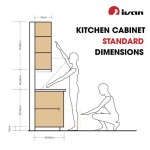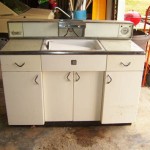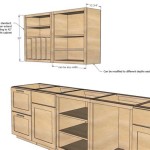Aligning Upper and Lower Kitchen Cabinets
Aligning kitchen cabinets is a crucial step in achieving a polished and professional look during a kitchen remodel or installation. Proper alignment ensures both visual appeal and optimal functionality, creating a seamless flow within the workspace. This process requires precision and attention to detail, impacting the overall perception and usability of the kitchen.
Before initiating the alignment process, it's essential to assess the existing conditions. Inspect the walls for plumbness and the floor for levelness. Uneven surfaces can significantly impact cabinet alignment, requiring adjustments before installation begins. Using a level and a plumb bob can help identify any discrepancies in the walls and floor. Marking these variations is essential for planning the cabinet placement and making necessary shims or adjustments.
Starting with the base cabinets is standard practice, as they form the foundation for the entire kitchen layout. Beginning in a corner, place the first base cabinet and check its level both front-to-back and side-to-side. Shims are indispensable tools for achieving perfect level on uneven floors. Once level, secure the cabinet to the wall using appropriate screws.
Continuing the installation, place subsequent base cabinets adjacent to the first, ensuring they are flush and aligned. Clamps can be beneficial in holding the cabinets together tightly while securing them to each other and the wall. Repeating the leveling and securing process for each cabinet ensures a straight and uniform base cabinet run.
Once the base cabinets are installed and aligned, the focus shifts to the upper cabinets. Careful measurements are crucial to determine the correct height for hanging the upper cabinets. Standard practices suggest leaving a specific distance between the countertop and the bottom of the upper cabinets for optimal workspace and appliance clearance. Marking this height consistently across the wall ensures uniformity.
Similar to the base cabinets, starting in a corner is recommended for upper cabinet installation. A temporary support ledge can be extremely helpful in holding the upper cabinets in place while securing them to the wall. This ensures the cabinets remain aligned and at the correct height during the installation process.
After positioning the first upper cabinet, carefully check its level and alignment with the base cabinets below. Precision is key in this stage, as any misalignment will be visually apparent. Shimming behind the upper cabinets can correct minor discrepancies in the wall. Once the first cabinet is secured, continue installing the remaining upper cabinets, ensuring they are flush and aligned with each other and the base cabinets.
Filler pieces are commonly used to bridge gaps between cabinets and walls, especially in corner installations. These pieces not only enhance the aesthetic appeal but also provide structural support. Accurate measurements are crucial for cutting filler pieces to the correct size, ensuring a snug fit and a polished finish.
Dealing with uneven walls presents a specific challenge during cabinet alignment. Flexible shims are particularly useful in these situations, allowing for adjustments to compensate for the wall variations. In extreme cases, it might be necessary to scribe the cabinets to the wall contour. Scribing involves marking the cabinet back to match the wall's irregularities and then carefully trimming the cabinet to fit precisely. This technique ensures a tight fit and a professional finish, even with significant wall imperfections.
The use of specialized tools can greatly enhance the accuracy and efficiency of the alignment process. Laser levels project a level line across the wall, providing a consistent reference point for cabinet installation. Cabinet jacks offer adjustable support, making it easier to hold cabinets in place during installation and alignment. These tools, while not always necessary, can significantly simplify the process and improve the final outcome.
After all cabinets are installed, final adjustments can be made to ensure perfect alignment. Fine-tuning the positioning and tightening all screws ensures stability and a seamless appearance. Inspecting the alignment from various angles, particularly from doorways and across the room, can help identify any subtle discrepancies that need correction.
Proper alignment of upper and lower kitchen cabinets is essential for creating a functional and visually appealing kitchen. Careful planning, precise measurements, and the use of appropriate tools contribute to a successful outcome. Addressing wall and floor variations with shims and other adjustment techniques ensures a professional finish, maximizing both the aesthetic and practical value of the kitchen space.

Upper And Lower Cabinet Alignment
Where To End The Kitchen Backsplash Yet Another Question For Book Designed

Please Help Me With My Kitchen Cabinets Alignment Dilemma

18 Examples Of Two Toned Kitchen Cabinets From Designers
Setting Kitchen Cabinets 41 Lumber Serving Iron Mountain And The U P

Our Go To Cabinet Hardware Placement 60 Of Pable Favorites Emily Henderson

Using Diffe Wall Cabinet Heights In Your Kitchen

Do The Upper Cabinets Need To Line Up With Base Ehow
:strip_icc()/cdn.cliqueinc.com__cache__posts__250323__two-toned-kitchen-cabinets-250323-1519325258540-image.700x0c-61c5b997a59a4cb2a99636b047561d5d-a82f610a1d424c409ffe72b484b6f41a.jpg?strip=all)
30 Stylish Two Toned Kitchen Ideas From An Expert

Custom Built In How To Install Base Cabinets Simply Aligned Home








